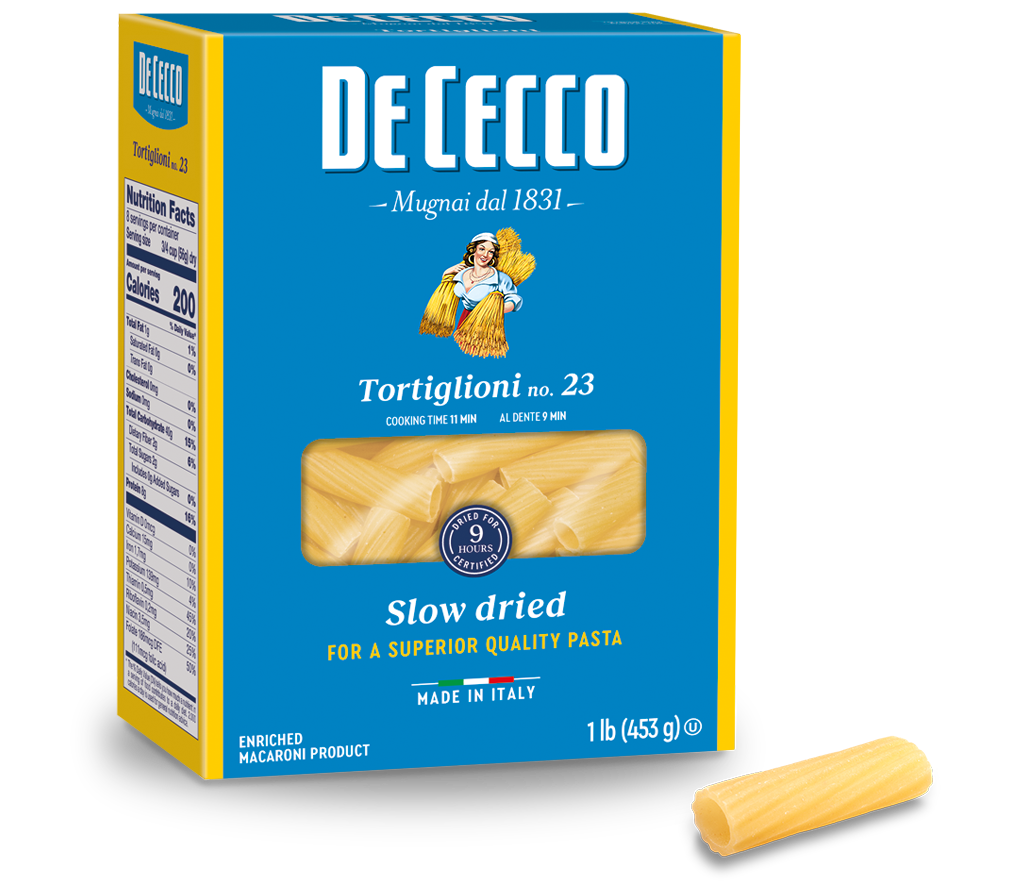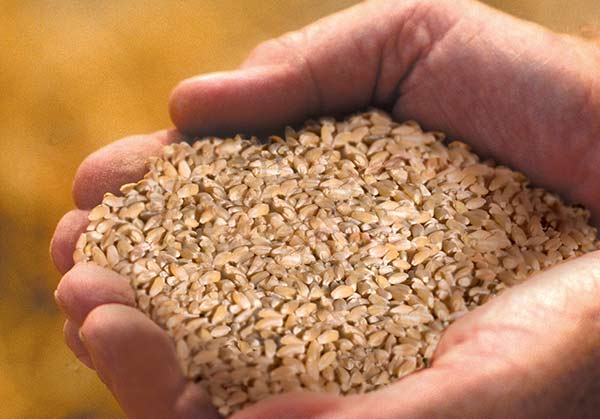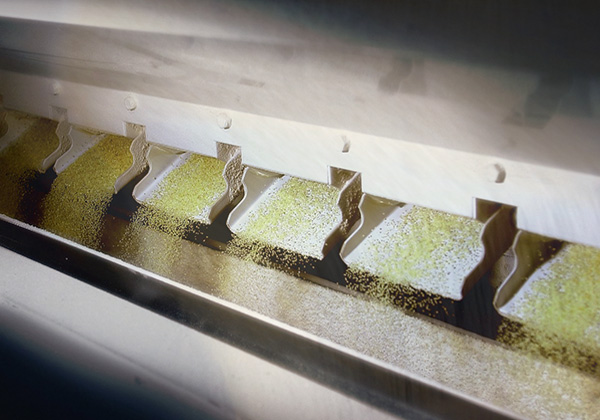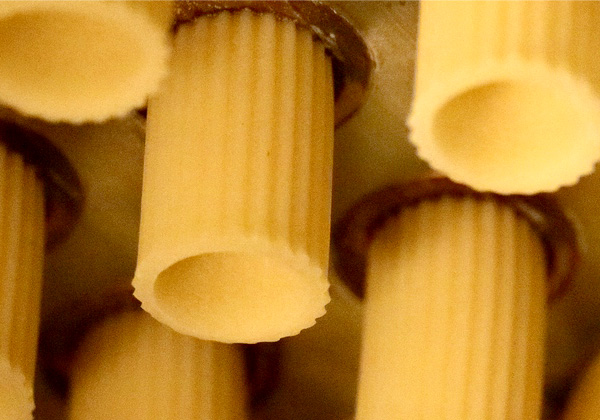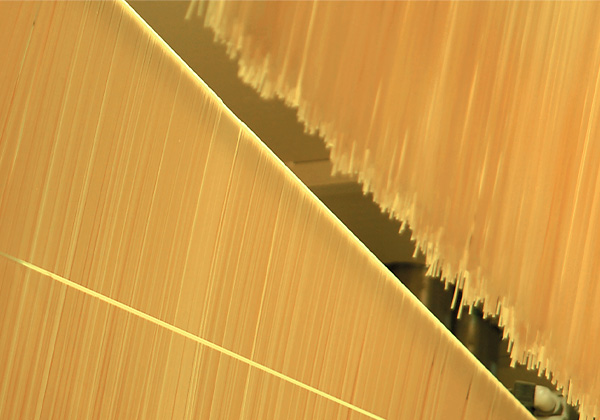Angel Hair Nests no. 209
The origins of Angel Hair Nests, with their evocative name (Angel Hair) and light consistency, are contested between the area around Genoa, Naples and the Ciociaria (central Italy). It is one of the thinnest types of long pasta wound into a nest shape.
Even the name Angel Hair is reminiscent of the fine consistency of this type of pasta which is ideal for infants from 9 months old onwards to help them get used to eating food for grown-ups.
Angel Hair are a type of pasta which is ideal with broth into which it is broken. Angel Hair can also be used for pasta dishes served with white sauces, eggs, uncooked butter and cheese.
Available in 8.8 oz pack.
- Cooking time: 2 min
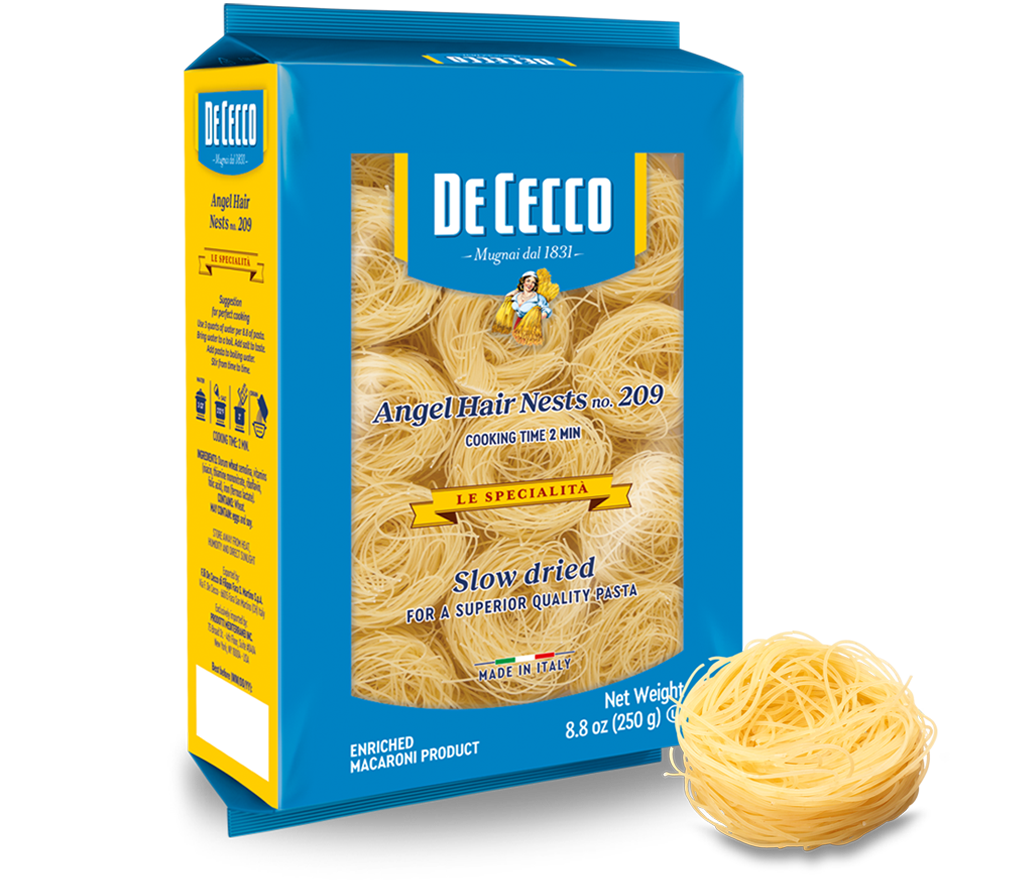
play
Our method
Attention, care, experience and quality during every phase: from our mill to your table.
You may also be interested in
Tortiglioni no. 23
Tortiglioni are one of many varieties of maccherone, one of the oldest types of pasta originating from Naples.
The name in Italian refers to the shape and comes from the Vulgar Latin tortillare which literally means to wrap in a spiral with a characteristic pattern from the lathe used in pasta production.
The shape is particularly versatile, but also very original, and best suited to full-bodied sauces.
Tortiglioni are excellent served with succulent, meat-based sauces. They are also very good served with tomato sauce or vegetable and tomato sauces. It is a particularly suitable type of pasta for oven-baked dishes.
Available in 16.0 oz and 5 lb pack.
Find out more
